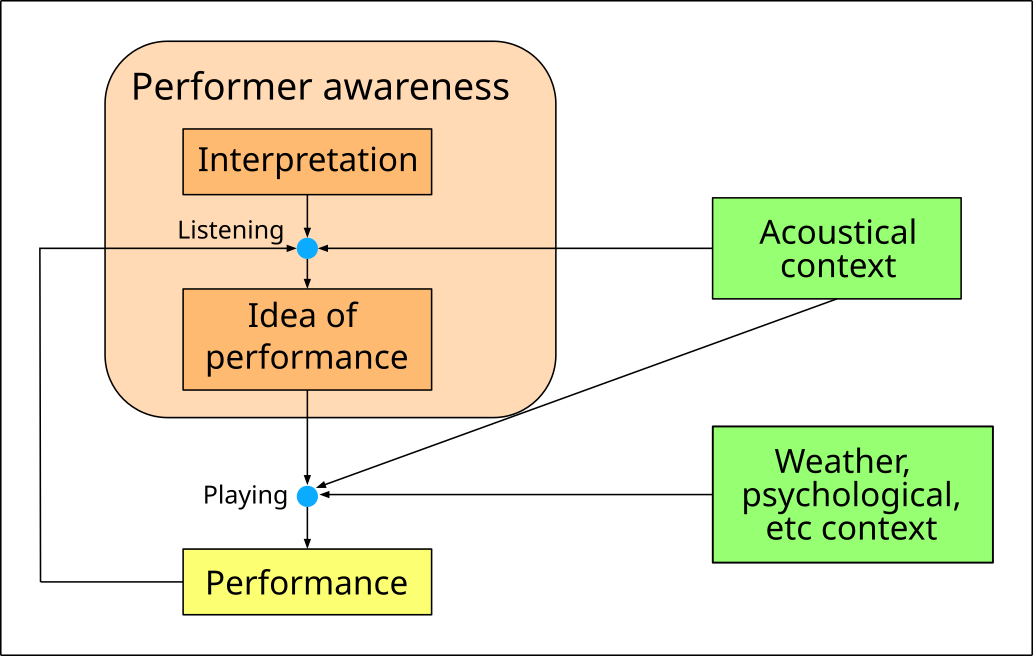The Home for Music Information Processing applications about Music Interpretation Analysis
© 2022.

This work is licensed under a Creative Commons Attribution 4.0 International License.
In Music Information Processing field, the interpretation of a music piece has been defined as the artistic intention of the performer. It must be distinguished from the performance, which is the set of physical events happened during a music execution.
It must be remarked that the use of such terminology does not depend on the musicological debate about how and when the concept of interpretation was born, but it has the sole scope of distinguishing the interior and ideal representation of the performance, from the real performance that was actually realized.
Such distinction is motivated by various studies that, starting since 1968, have analyzed how musicians adapt their way of playing to the surrounding acoustical context (see References below).
More in general, in order to better define the phenomenon of interpretation adaptation, we also postulate the existence of unknown factors that can induce an unconscious adaptation of the interpretation. Such factors could include, for instance, the psycho-physiological conditions of the performer or weather conditions such as humidity and temperature that can affect the acoustic properties of the instrument. It is important to observe that such unknown factors are included in the proposed framework to achieve a more complete description of the phenomenon, but no experimental proof of their actual relevance is known to the authors as of the time of writing.
The following scheme, derived from [Ueno et al., 2010], resumes the proposed distinction between interpretation and performance, outlining the external factors that produce perceivable differences between interpretation and performance.
